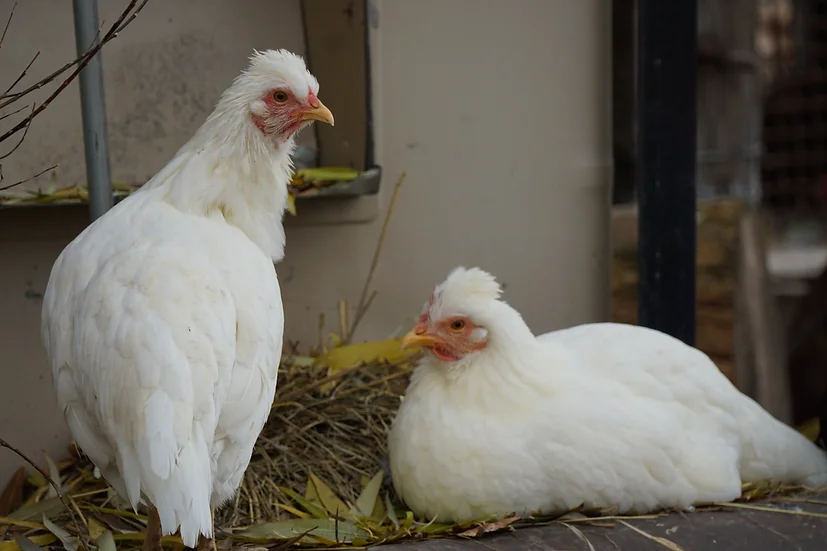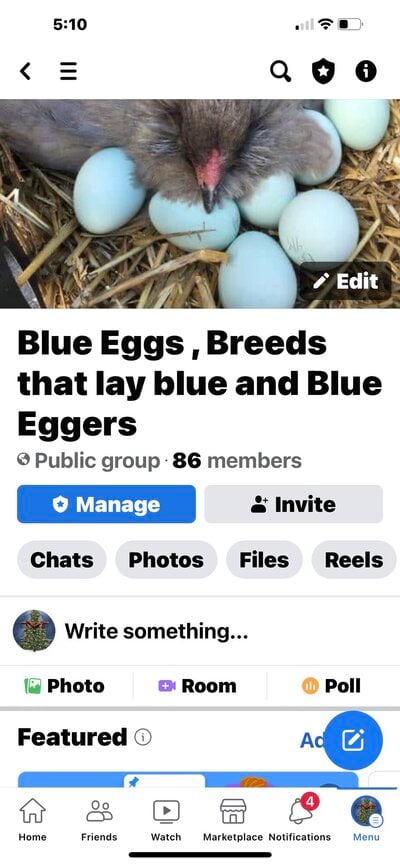Navigation
Install the app
How to install the app on iOS
Follow along with the video below to see how to install our site as a web app on your home screen.
Note: This feature may not be available in some browsers.
More options
You are using an out of date browser. It may not display this or other websites correctly.
You should upgrade or use an alternative browser.
You should upgrade or use an alternative browser.
Green Eggs vs Blue Eggs for A Premium Egg Business
- Thread starter nicalandia
- Start date
- Thread starter
- #222
I post information for people interested on the subject and for those willing to follow and learn. I will be doing the tests myself I really don't care if anyone does it or not before me.
I voted GREEN 
After not having chickens for over a decade I’m jumping all in and am planning on trying to accomplish something similar to that gorgeous basket picture. I feel blue is more common but greens from the lightest mint to the darkest olive just really get me excited and I cannot wait to see what I can to in that spectrum
After not having chickens for over a decade I’m jumping all in and am planning on trying to accomplish something similar to that gorgeous basket picture. I feel blue is more common but greens from the lightest mint to the darkest olive just really get me excited and I cannot wait to see what I can to in that spectrum
Pea comb is linked on chromosome 1 with the oocyanin gene and they are inherited together. With a single comb blue egg layer crossed to other single comb birds, he would not have a simple way to identify roosters that are homozygous for the oocyanin gene. By starting with a pea comb rooster, he can cross to single comb leghorns and in the F2, pea comb roosters and hens will mostly be homzygous for blue eggs.
My response was that he can do DNA tests for @$25 each to identify homozygous roosters. I did tests on 12 roosters earlier this year at a total cost of about $400. I culled all of the roosters with no oocyanin gene and with only 1 copy of the oocyanin gene. Now I have a flock with 3 mature roosters that 100% produce blue egg laying offspring. Oocyanin is a dominant gene where 1 copy makes the egg shell blue.
I was just filling out the form to do the blue gene test. Did you use feathers or blood? I used the company years ago on my parrot and loved them so I was excited to see they do the blue egg gene test
AmeliaBedelia
Crowing
Voted green because blue seems more easy to find around here, and hatcheries seem to be selling out of their “olive eggers” and “true green” layers faster than the blue-layers. So I think that indicates more demand and/or shorter supply of green layers.
But both are probably desirable, especially if your stock lay decently and it’s a pretty blue or green. I could see people paying more for deeper or more vibrant colors.
But both are probably desirable, especially if your stock lay decently and it’s a pretty blue or green. I could see people paying more for deeper or more vibrant colors.
I Like Turkeys
Crowing
Whenever you do this hemin test it’d be wonderful to see the results.I post information for people interested on the subject and for those willing to follow and learn. I will be doing the tests myself I really don't care if anyone does it or not before me.
I saw this on facebook, not as blue obviously, but it’s a fairly vibrant color. Things like this make blue eggs all the more desirable I suppose.
- Thread starter
- #228
Very nice article that I find pertinent to this thread
Egg quality and shell colour characteristics of crosses between Araucana and Schijndelaar with highly productive White Leghorn and Rhode Island Red strains
http://agriscitech.eu/wp-content/uploads/2015/09/016.pdf
From the PDF:
Higher egg weights were found in breeds selected for this trait (Rhode
Island Red and White Leghorn) compared to breeds in which the selection in this direction was not purposeful. Among the studied groups, The investigation of eggshell colour showed reduction of L* values from 95.49 in white-shelled eggs to 59.71 in
brown-shelled eggs . The shell colour index (SCI) was the highest in white eggs (White Leghorn) and in blue-green eggs of Schijndelaar which had
comparable colour characteristics. The lowest SCI was established in brown eggs (Rhode Island Red).
Schijndelaar


Egg quality and shell colour characteristics of crosses between Araucana and Schijndelaar with highly productive White Leghorn and Rhode Island Red strains
http://agriscitech.eu/wp-content/uploads/2015/09/016.pdf
From the PDF:
Higher egg weights were found in breeds selected for this trait (Rhode
Island Red and White Leghorn) compared to breeds in which the selection in this direction was not purposeful. Among the studied groups, The investigation of eggshell colour showed reduction of L* values from 95.49 in white-shelled eggs to 59.71 in
brown-shelled eggs . The shell colour index (SCI) was the highest in white eggs (White Leghorn) and in blue-green eggs of Schijndelaar which had
comparable colour characteristics. The lowest SCI was established in brown eggs (Rhode Island Red).
Schijndelaar

Last edited:
- Thread starter
- #229
This is a very nice color Chart from the Research(PDF posted).. I will go into detail about it.

In Measuring Color using special cameras the values are as follows:
L* = 100 is Pure White(Eggshell white is not that white), While 0 is Pitch Black
a* = Higher Value are for red color, Negative value is for Green
b* = Negative value is for Blue and Positive value for Yellow
The CIELAB color space diagram

Values for Leghorns(White eggs)
L* = 95.5
a* = -0.65
b* = 1.20
Rhode Island Red(production type RIR lay darker brown color than your average hatchery or SQ Type since brown color is of a great economic value that is actively been bred for by high production companies)
L* = 59.71
a* = 16.20
b* = 26.23
Schijndelaar
L* = 83.31
a* = -3.13
b* = 5.11
Araucana
L* = 76.45
a* = -5.64
b* = 12.18
In Measuring Color using special cameras the values are as follows:
L* = 100 is Pure White(Eggshell white is not that white), While 0 is Pitch Black
a* = Higher Value are for red color, Negative value is for Green
b* = Negative value is for Blue and Positive value for Yellow
The CIELAB color space diagram
Values for Leghorns(White eggs)
L* = 95.5
a* = -0.65
b* = 1.20
Rhode Island Red(production type RIR lay darker brown color than your average hatchery or SQ Type since brown color is of a great economic value that is actively been bred for by high production companies)
L* = 59.71
a* = 16.20
b* = 26.23
Schijndelaar
L* = 83.31
a* = -3.13
b* = 5.11
Araucana
L* = 76.45
a* = -5.64
b* = 12.18
Last edited:
nene4ever9
In the Brooder
- Jan 28, 2023
- 5
- 4
- 10
Do you have hatching eggs available?Also a Blue egg from a Arkansas Blue Pullet(on the right), Arkansas Hen(on left) and Olive egger on bottom
View attachment 3374293
Attachments
New posts New threads Active threads
-
Latest threads
-
Something hanging out of hen’s vent area
- Started by 27seekup40
- Replies: 0
-
-
-
Swollen eye with pus treatment advice
- Started by Webbykins
- Replies: 0
-
I know this is a bizarre question-but....
- Started by Lyranonamous
- Replies: 0
-
-
Threads with more replies in the last 15 days
-
-
-
-
-
Prettiest chicken breeds and plumage color
- Started by Beau plus penny
- Replies: 46
-
×



